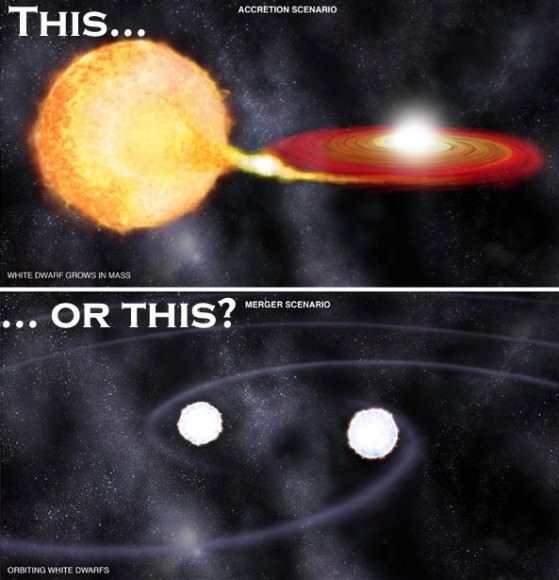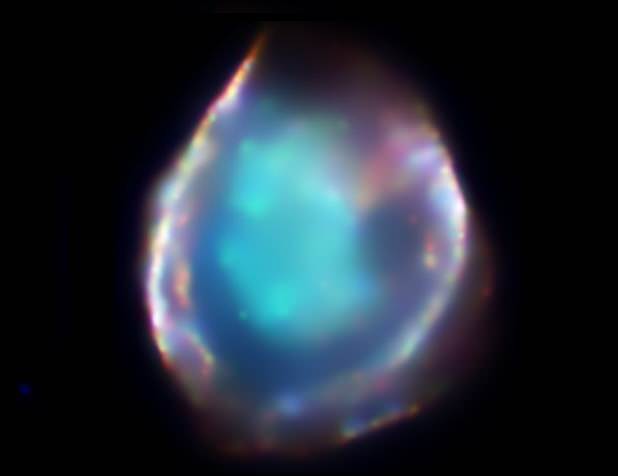[/caption]
With so much of our current understanding of the universe based on Type 1a supernovae data, a good deal of current research is focused upon just how standard these supposed standard candles are. To date, the weight of analysis seems reassuring – apart from a few outliers, the supernovae do all seem very standard and predictable.
However, some researchers have come at this issue from a different perspective by considering the characteristics of the progenitor stars that produce Type 1a supernovae. We know very little about these stars. Sure, they are white dwarfs that explode after accumulating extra mass – but just how this outcome is reached remains a mystery.
Indeed, the final stages preceding an explosion have never been definitively observed and we cannot readily point to any stars as likely candidates on a pathway towards Type Ia-ness. In comparison, identifying stars that are expected to explode as core collapse supernovae (Types Ib, Ic or II) is easy – core collapse should be the destiny of any star bigger than 9 solar masses.
Popular theory has it that a Type 1a progenitor is a white dwarf star in a binary system that draws material off its binary companion until the white dwarf reaches the Chandrasekhar limit of 1.4 solar masses. As the already compressed mass of predominantly carbon and oxygen is compressed further, carbon fusion is rapidly initiated throughout the star. This is such an energetic process that the comparatively small star’s self-gravity cannot contain it – and the star blows itself to bits.

But when you try to model the processes leading up to a white dwarf achieving 1.4 solar masses, it seems to require a lot of ‘fine tuning’. The rate of accretion of extra mass has to be just right – too fast a flow will result in a red giant scenario. This is because adding extra mass quickly will give the star enough self-gravity so that it can partially contain the fusion energy – meaning that it will expand rather than explode.
Theorists get around this problem by proposing that a stellar wind arising from the white dwarf moderates the rate of infalling material. This sounds promising, although to date studies of Type 1a remnant material have found no evidence of the dispersed ions that would be expected from a pre-existing stellar wind.
Furthermore, a Type 1a explosion within a binary should have a substantial impact on its companion star. But all searches for candidate surviving companions – which would presumably possess anomalous characteristics of velocity, rotation, composition or appearance – have been inconclusive to date.
An alternative model for the events that lead up to a Type 1a are that two white dwarfs are drawn together, inexorably inspiralling until one or the other achieves 1.4 solar masses. This is not a traditionally favoured model as the time required for two such comparatively small stars to inspiral and merge could be billions of years.
However, Maoz and Mannucci review recent attempts to model the rate of Type 1a supernovae within a set volume of space and then align this with the expected frequency of different progenitor scenarios. Assuming that between 3 to 10 % of all 3-8 solar mass stars eventually explode as Type 1a supernovae – this rate does favour the ‘when white dwarfs collide’ model over the ‘white dwarf in a binary’ model.
There is no immediate concern that this alternate formation process would affect the ‘standardness’ of a Type 1a explosion – it’s just not the finding that most people were expecting.
Further reading:
Maoz and Mannucci Type-Ia supernova rates and the progenitor problem. A review.

